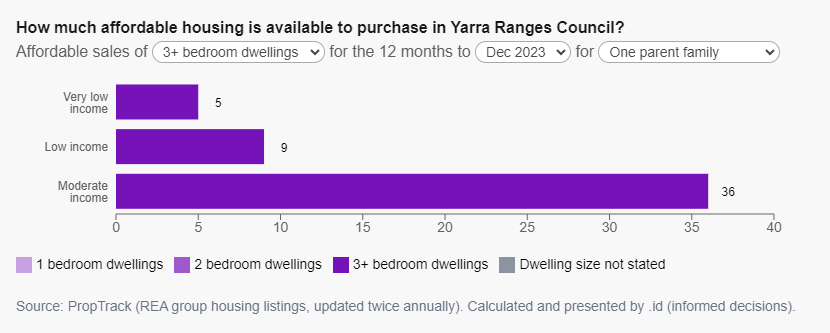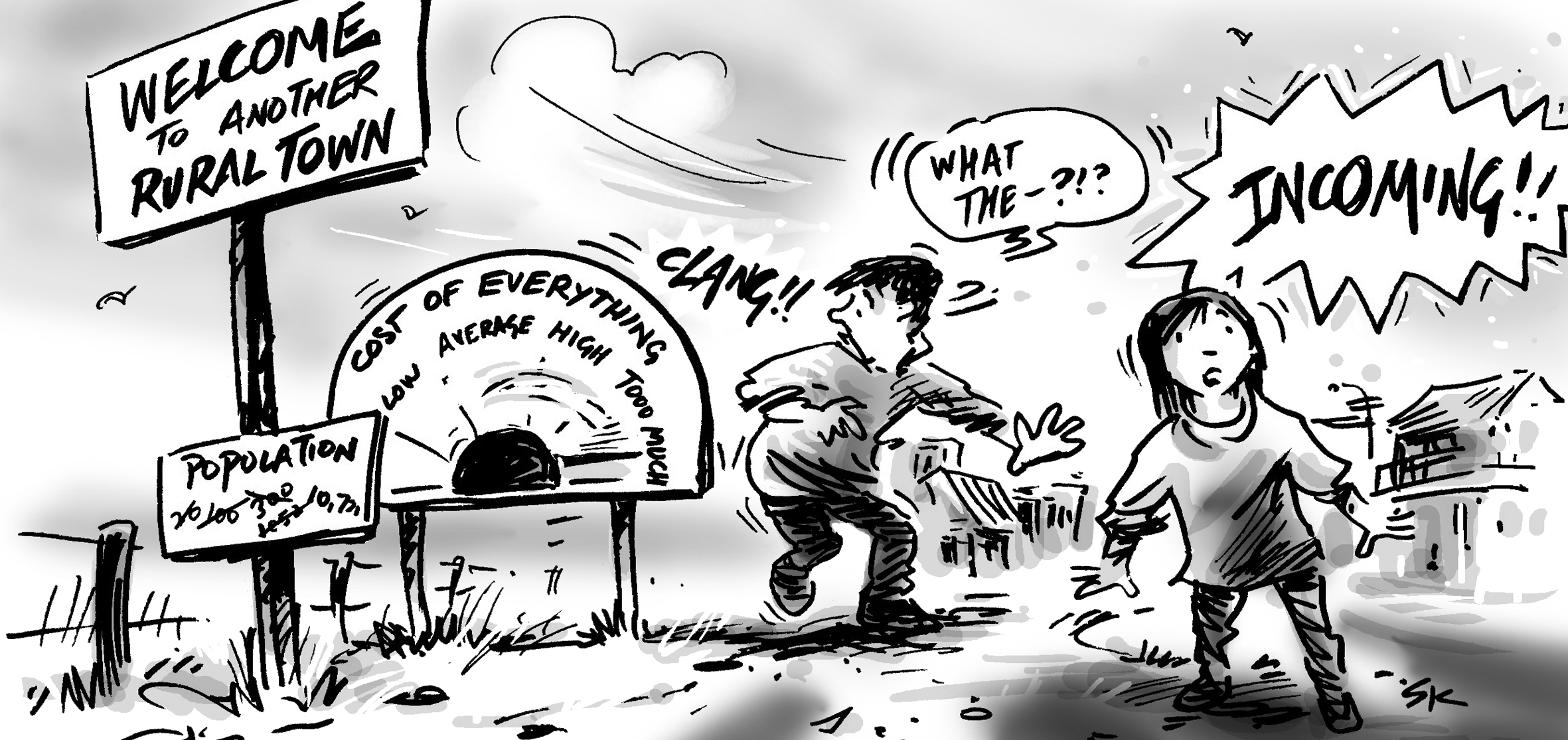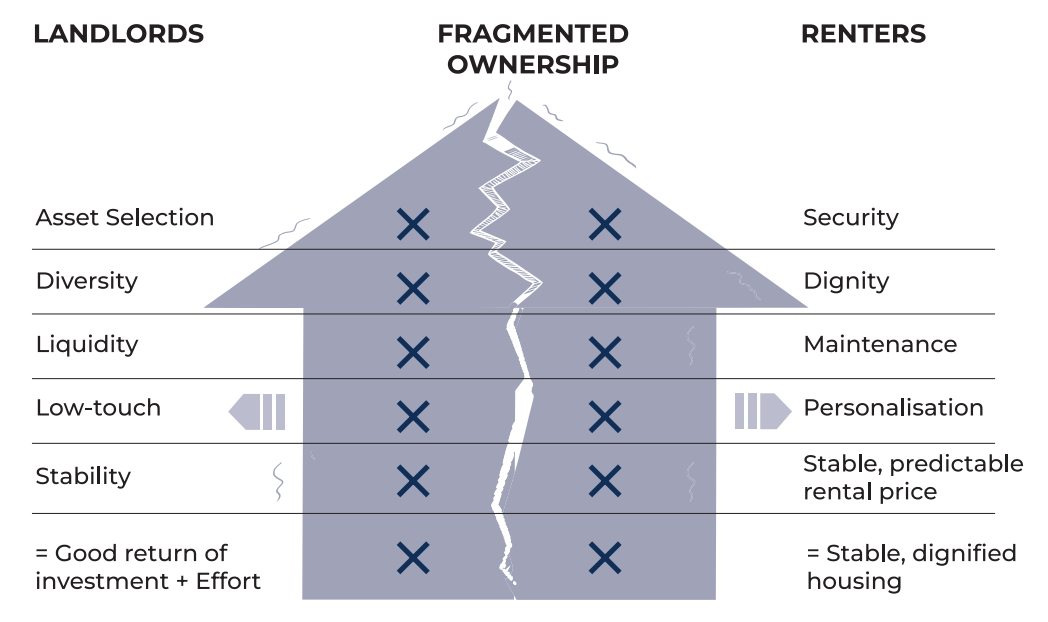Housing consultant Crystal McDonald has a long career in the housing space. She's also a mum who spent most of last year searching for a home. In this blog, Crystal connects the housing data many of us regularly pore over to the role of council in the housing space and her personal housing story.
I have spent the majority of my career in housing-related roles, from building surveying and volume builders to housing support and policy development. Most recently before joining .id (informed decisions), I was developing affordable housing policies and action plans in local government.
I am also a single mum who’s had 7 homes in my kids’ 11 years. I know first-hand the social and economic impacts a lack of affordable housing can have to families and their communities.
Searching for affordable, appropriate housing
Last year I engaged in the weekend wars with the cut-throat housing market. In the entire 12 months leading up to my purchase, there were 2,400 sales listings, but only 36 that met our budget and size.

This was across the whole of Yarra Ranges, one of the largest council areas in Victoria. If I wanted to remain in my local community where the kids go to school, I had the “choice” of nine. Nine, over 12 months that I could attempt to bid for.
Lucky though I wasn't looking in Chirnside Park, which had 193 listings in this period but only 1 affordable to a one-parent, moderate income household.

Eventually I won. I am now the proud owner of a ridiculous mortgage and a “hills garden” overrun by ivy! Market:0, Me:1, Banks:1+6% p.a...
Supporting informed housing decisions
I am one of the lucky ones, and I am very invested in doing what I can to support local government to play their part in addressing this housing crisis.
Now, as a housing consultant for .id, I can do just that. My experience in affordable housing with local government has now expanded to a national level, enabling me to see examples of council-led housing interventions all across Australia. Supported by .id’s digital information platform and the expertise of a company full of demographers, economists, forecasters and housing professionals, I am now in an excellent position to help councils put shape around the issues that they already know, but have been struggling to articulate. My colleagues and I work with councils in a variety of ways in the housing space.
- Understanding local government’s role in housing and what policies can support you.
- Identifying your areas with affordability issues; your community's capacity to afford stock, the level of stock that is affordable.
- Identifying the appropriateness of housing for your community; families, singles, workers, students, now and emerging.
- Exploring what may be impacting supply and costs:
- influx of demand
- demographic shifts of your population
- short term rental accommodation impacts
- whether industries are creating an increase in demand
- where local workers live
- the impact of migration on your area
- whether boomers are selling high or passing on to the next generation
- Identifying local opportunities for increasing and improving housing
For example, in Yarra Ranges, we struggle with some of the lowest rental supply in Melbourne and it got worse after the pandemic. We knew anecdotally that people were selling off their investment properties after minimal rental standards were legislated. Due to the unique topography of the land and age and character of much of the "hills homes" up here, the cost to get them compliant made retaining the property as a rental no longer feasible.
Data from housing.id, which can help you understand market changes over time by small area, helped my local council demonstrate this impact and develop advocacy and action plans to address the range of causal issues.
The data confirmed that from December 2019 to December 2022, the number of rental listings dropped by 35%. No wonder I was finding it so hard to find a rental at that time.
Rentals in Yarra Ranges pre- and post-pandemic
| |
Dec 2019 QTR |
Dec 2022 QTR |
Variance |
| Total listings |
1653 |
1083 |
-35% |
Source: Yarra Ranges housing monitor; PropTrack listings data, affordability calculations by .id (informed decisions)
Using local data to make local decisions
For council staff tasked with improving local housing, it’s so important to get clear on what you have in each of your areas, and how it has changed over time, to be able to demonstrate this to policy makers and funders. With this clarity, you can plan a targeted course of action. One that gets to the roots, to where the issues are most concentrated, to have the most impact.
The housing crisis is pervasive, a complex system of issues all branching off from each other and wreaking havoc. Like dealing with ivy! I could spray weed kill over the lot, but it will take a long time to see any improvement, and will impact areas that it needn’t, creating new issues. Finding those main roots and just spot-treating will see results much faster and have little unintended consequences. As with housing, you can apply blanket policies based on state or even LGA figures, or you can find out the household types and areas that are most impacted, drill down into each of your local areas to investigate local supply, demand and affordability and explore how your local social and political landscape may be uniquely impacting your council.
Imputing this this detail into policies, plans and housing targets gives councils and other decision-makers the best chance at making a lasting impact on the housing crisis. Strategic council documents such as Health and Wellbeing Plan, Place Planning, Affordable Housing Policy, Housing Negotiation frameworks, Community Engagement Plans, Social Planning and Advocacy Agendas all benefit from this deeper insight into housing need.
Learn more about how Crystal and .id support decision making in the housing space by exploring our housing monitor tool (housing.id) or reaching out: housing@id.com.au











